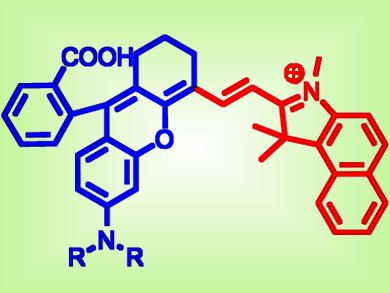A team at Hunan University, Changsha, China, has developed a new class of switchable fluorescent dyes that reduce the amount of photodamage, but do not compromise deep tissue penetration, in the fluorescence imaging of living animals. Additionally, there is minimum background autofluorescence interference with the new near-IR fluorophores named CS, for Changsa.
The six new dyes CS1-6 are based on the traditional rhodamine dyes (blue), but are superior to rhodamine dyes as they have both absorption and emission in the near-IR region while retaining the rhodamine-like fluorescence ON-OFF switching mechanism, the team says.
- A Unique Class of Near-Infrared Functional Fluorescent Dyes with Carboxylic-Acid-Modulated Fluorescence ON/OFF Switching: Rational Design, Synthesis, Optical Properties, Theoretical Calculations, and Applications for Fluorescence Imaging in Living Animals,
L. Yuan, W. Lin, Y. Yang, H. Chen,
J. Am. Chem. Soc. 2012.
DOI: 10.1021/ja209292b




